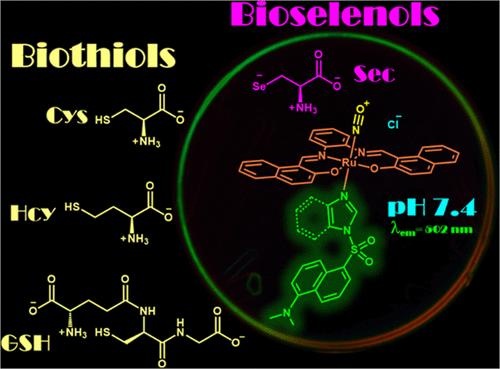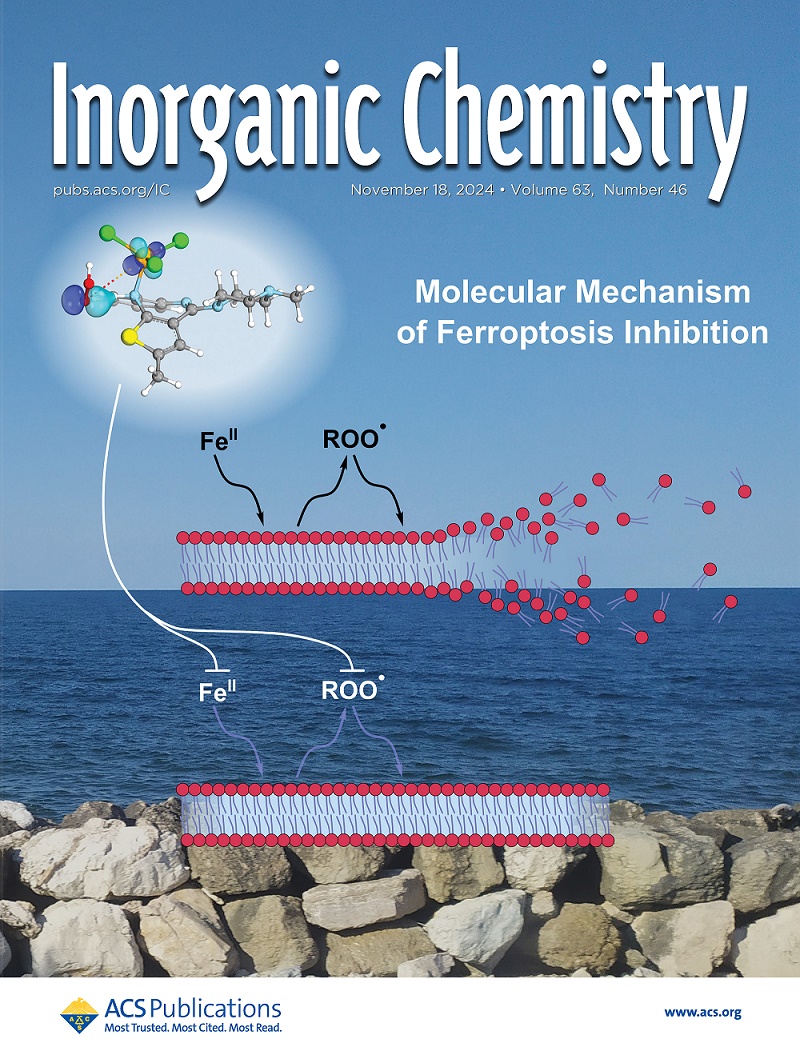New Fluorescent Chemodosimetric Mechanism for Selective Recognition of Selenocysteine by Dansyl-Appended Ruthenium Nitrosyl Complexes
IF 4.3
2区 化学
Q1 CHEMISTRY, INORGANIC & NUCLEAR
引用次数: 0
Abstract
Selenocysteine (Sec) is a biologically essential amino acid that serves as a crucial component in selenoproteins that play a key role in various cellular functions. Thus, developing a reliable and rapid method for detecting Sec in physiological media is of paramount importance. This report introduces for the first time a novel fluorescent chemodosimetric mechanism for the selective recognition of Sec using dansyl-appended ruthenium nitrosyl complexes. These complexes consist of a tetradentate ligand featuring a π-extended system (L = N,N′-bis(2-hydroxy-1-naphthylidene)-1,2-phenylenediamine) and a monodentate ligand derived from the conjugated dansyl group, which acts as a strong fluorescent signaling unit (ID = dansyl-imidazole, BD = dansyl-benzimidazole). The reaction between Sec and the complexes {RuNO}6 = [RuL(NO)(ID)]Cl or [RuL(NO)(BD)]Cl in an aqueous phase enhances fluorescence; as a result, it releases NO• that has been demonstrated through fluorimetric titrations, UV–vis titrations, 77Se NMR, EPR, IR, MS, and electronic density calculations. [RuL(NO)(ID)]Cl and [RuL(NO)(BD)]Cl quantitatively detect Sec within a micromolar concentration range, achieving the limit of detection as low as 0.31 and 0.12 μM, respectively, within just 5 min. Remarkably, these chemodosimeters can also be conveniently employed to detect Sec in living Saccharomyces cerevisiae cells.

求助全文
约1分钟内获得全文
求助全文
来源期刊

Inorganic Chemistry
化学-无机化学与核化学
CiteScore
7.60
自引率
13.00%
发文量
1960
审稿时长
1.9 months
期刊介绍:
Inorganic Chemistry publishes fundamental studies in all phases of inorganic chemistry. Coverage includes experimental and theoretical reports on quantitative studies of structure and thermodynamics, kinetics, mechanisms of inorganic reactions, bioinorganic chemistry, and relevant aspects of organometallic chemistry, solid-state phenomena, and chemical bonding theory. Emphasis is placed on the synthesis, structure, thermodynamics, reactivity, spectroscopy, and bonding properties of significant new and known compounds.
 求助内容:
求助内容: 应助结果提醒方式:
应助结果提醒方式:


